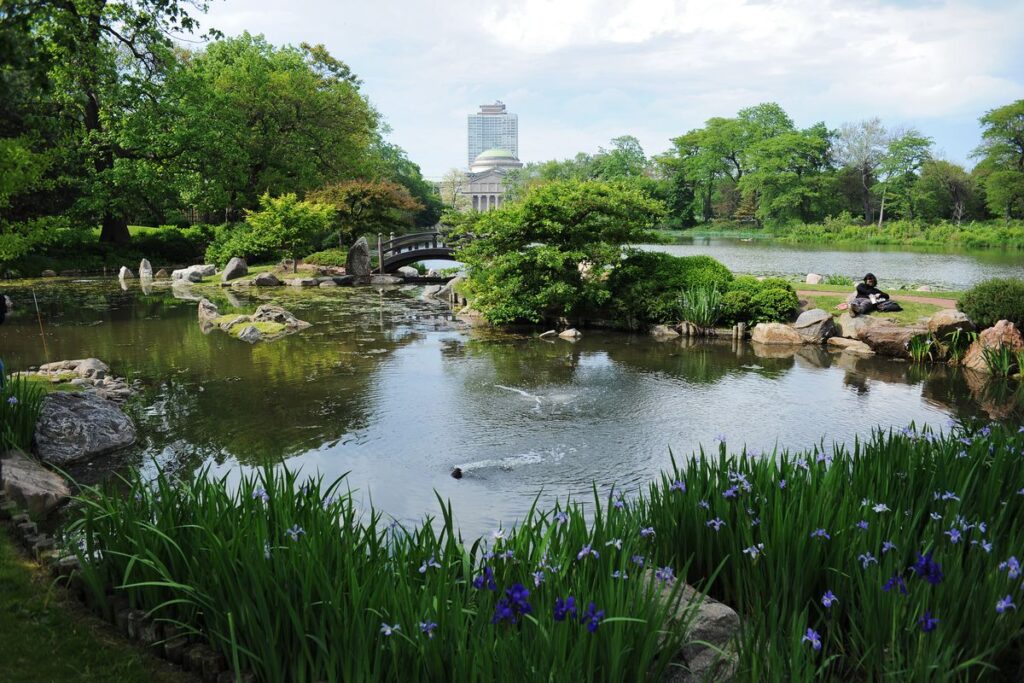Jackson Park and its Latest Date with History
Over the course of the next few months, local and national media attention will soon be directed towards Chicago’s historic Jackson Park as groundbreaking ceremonies are set to begin in September 2021 for the historic Barack Obama Presidential Library and Center. After a tumultuous year battling the COVID-19 pandemic and culminating in the historic election of President Joseph Robinet Biden, the selection of Chicago’s own Jackson Park to honor the nation’s first African-American president (Chicago’s own native son) keenly underscores the intractable connections of the south side community haven to Chicago’s own history and that of the nation. Just as Jackson Park served as the symbolic platform for the promotion of nineteenth century “American ideals” as host to the 1892 Columbian World’s Exposition, so too will it promote in the halls of the new presidential library the more inclusive multi-cultural ideals of twenty first century America most poignantly represented in the life and legacy of America’s 45th president.
While many Chicagoans would say that they maintain a deep understanding and knowledge of Chicago’s history and that of Jackson Park, it would be more accurate to note that most were first introduced to Jackson Park through the windows of the iconic yellow school buses. In what has become an annual rite of passage for many Chicago area school students, generations have made the annual trek through Jackson Park to visit the world-renowned Museum of Science and Industry. Home to the nation’s only exhibit of an intact, captured World War Two German U-Boat; a streamlined Art-Deco diesel-electric passenger train—the Pioneer Zephyr; and the aircraft of the famed Transportation Gallery, the museum attracts millions of visitors from across the city and nation to Jackson Park.
Beyond the confines of the museum, however, most visitors are unaware of the park’s true history and its over 550 acres of grassy fields, massive lagoons dotted with small islands for boating, and an actual Japanese garden—items all conceived in the late nineteenth century as part of a planned series of interconnected urban parklands linked by grand, opulent European inspired boulevards to frame the bustling metropolis we know today. Nor do most realize that the park was part of an elaborate scheme by Chicago real estate developers in the late 1860s to secure potential homeowners for open prairieland near Hyde Park—then, a “suburb” of the growing urban center and its then 300,000+ residents. These developers were able to secure the services and commitment of Frederick Law Olmsted, the “Father of American landscape architecture,” to first envision and then bring to life the various manifestations of Jackson Park over the course of nearly 30 years. Designer of New York City’s own Central Park, Olmsted would collaborate with some of Chicago’s most iconic architects, Daniel Burnham (famous for design work following the 1871 Chicago fire and for the 1901 Chicago Burnham Plan) and John Root of Burnham & Root, a quintessential nineteenth century Chicago-based architectural firm. By the late 1890’s, the trio of Olmsted, Burnham and Root had designed and developed Jackson Park as both an urban oasis for Chicago’s growing masses and a symbol uniquely representative of a city destined to take its place amongst the greatest in the world.
Over the course of the next year, Clef Notes Journal will publish a series of articles on the historical backdrop that Jackson Park offers for the home of the Barack Obama Presidential Library. We will interview leading public officials, architects and academic scholars to glean their unique perspectives on the historic park and its place in Chicago’s legacy. Readers can expect several original articles exploring such topics as the original nineteenth century concepts and visions for the development of parkland in and around Chicago; why Chicago’s Jackson Park should be recognized with the same degree of historical relevance as New York’s Central Park; Olmsted’s 30 years of work devoted to the park’s development; Jackson Park’s place in the 1892 Columbian World’s Exposition and more.
In addition, Clef Notes Journal will also examine park related topics spanning the 130+ years between the 1892 World’s Columbian Exposition and the 2021 groundbreaking ceremony for the Barack Obama Presidential Library and Center; a time wrought with burgeoning social, political and economic changes within a rapidly industrialized city that, for better or for worse, have shaped the physical composition and layout of the Jackson Park we know today.
We at Clef Notes believe that our year-long series will afford context and clarity to the significance of a beloved region of our city deserving of the recognition of one of America’s leading urban parklands. We will look to spotlight the historical symbolism Jackson Park proffers representative of this great American city, soon to serve as home to America’s first African American President, and Chicago’s favored son.




